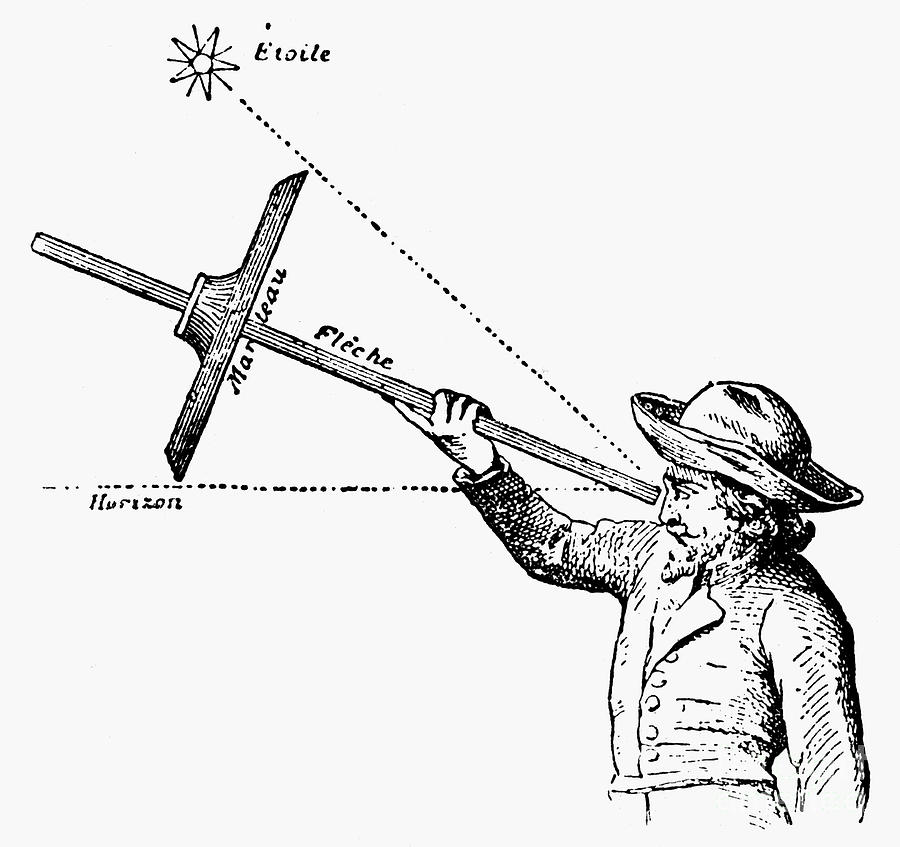A “yardarm” is not the entire yard, but just its tip outboard of the leeches of the sails. Some authorities commenting on our phrase suggest instead that we use the “upper yards,” while others recommend the “foreyard,” which is the lowest yard on the foremast, for our observations. But both require looking forward, through the sails. Sails are, um….opaque–not to put too fine a point on it. Hard to look through. To complicate matters, yards are raised, lowered, and rotated both vertically and horizontally. And where do we make our observations from? It’s quite a muddle.
Because it’s the word used in the phrase, I favor “yardarm” as opposed to “yard.” Otherwise, we’re going to have to change our course towards the sun, a non-trivial matter for a square rigger. The lower main yardarm would give an angle of, roughly, 50 degrees above the horizon viewed from the base of the mast. Adjustment of our heading will not be necessary, there being a wide view to either port or starboard as we draw an imaginary horizontal line at the height of the tip of the yard.

Yard or yardarm, however, few things would be of less use in gauging the altitude of a celestial body than the rigging. Mariners have long sought to isolate their observations of the sun, moon, and stars from the motion of the boat through use of the cross staff, astrolabe, backstaff, octant, and sextant. Yet the masts and yards actually amplify the roll and pitch of the ship, just what you don’t want.

And why use the altitude of the sun to tell time? By the period our phrase appeared in 1899, Harrison’s onboard chronometer had been in use for well over 100 years. Before that, time was kept by 30-minute sand glasses. In Columbus’ day noon was established by means of a gnomon, or vertical spike, in the center of the compass card. When the gnomon’s shadow fell on the card’s north, it was noon, and the glass would be set for a new day. Even though the difference between magnetic and true north was not yet understood, this demonstrates that Columbus knew that it wasn’t the sun’s altitude (which the yardarms could supposedly measure) that was at issue, but the time of meridian passage.
Shiver me timbers, this is all sounding very shaky. But IF we wanted to tell time using the yardarms, how would we do it? Tune in next time.
